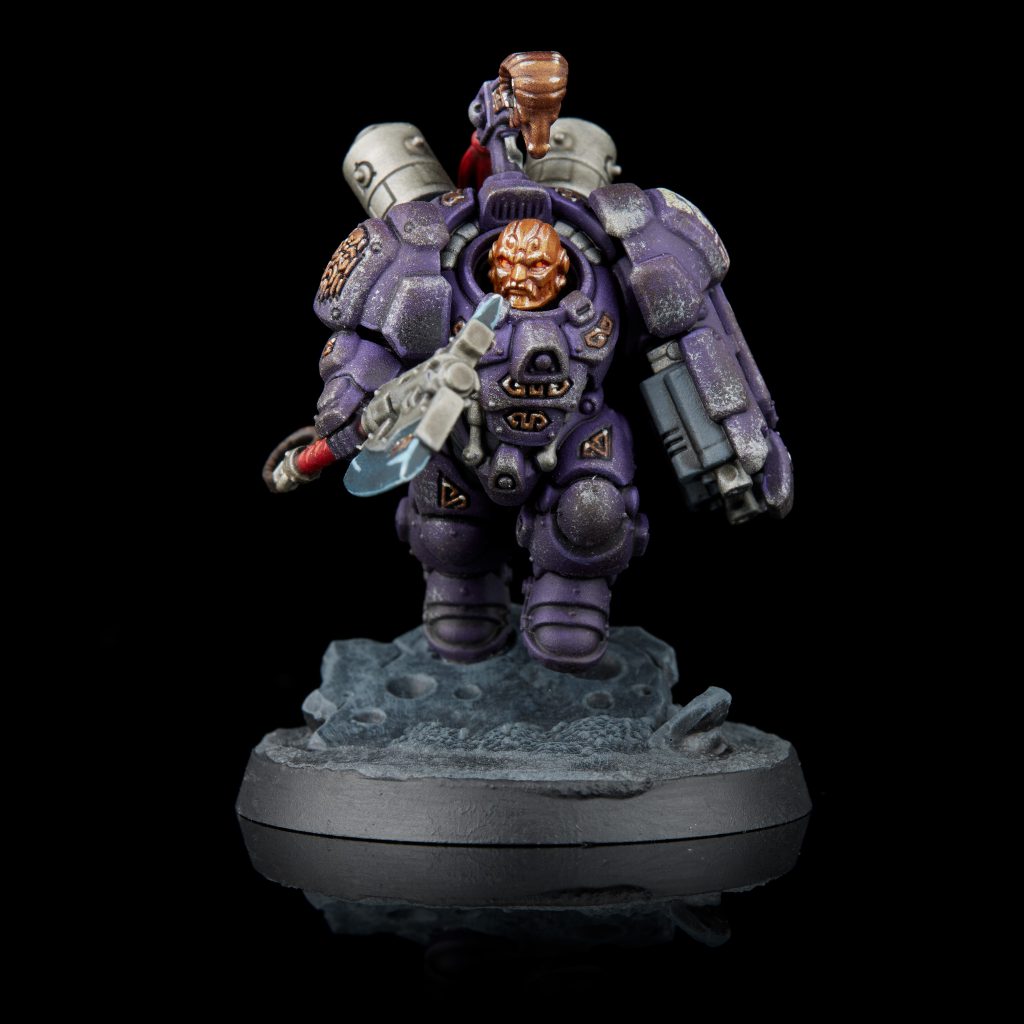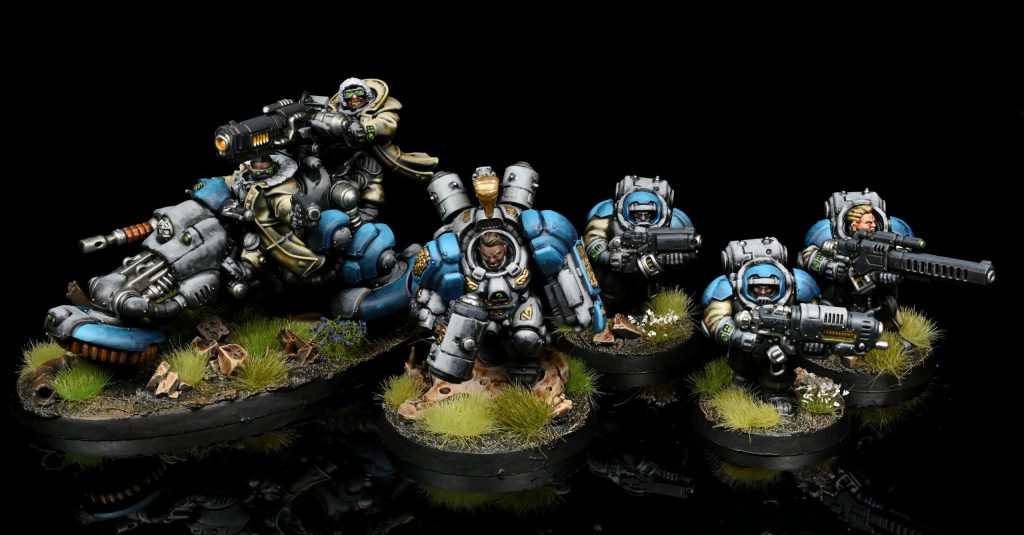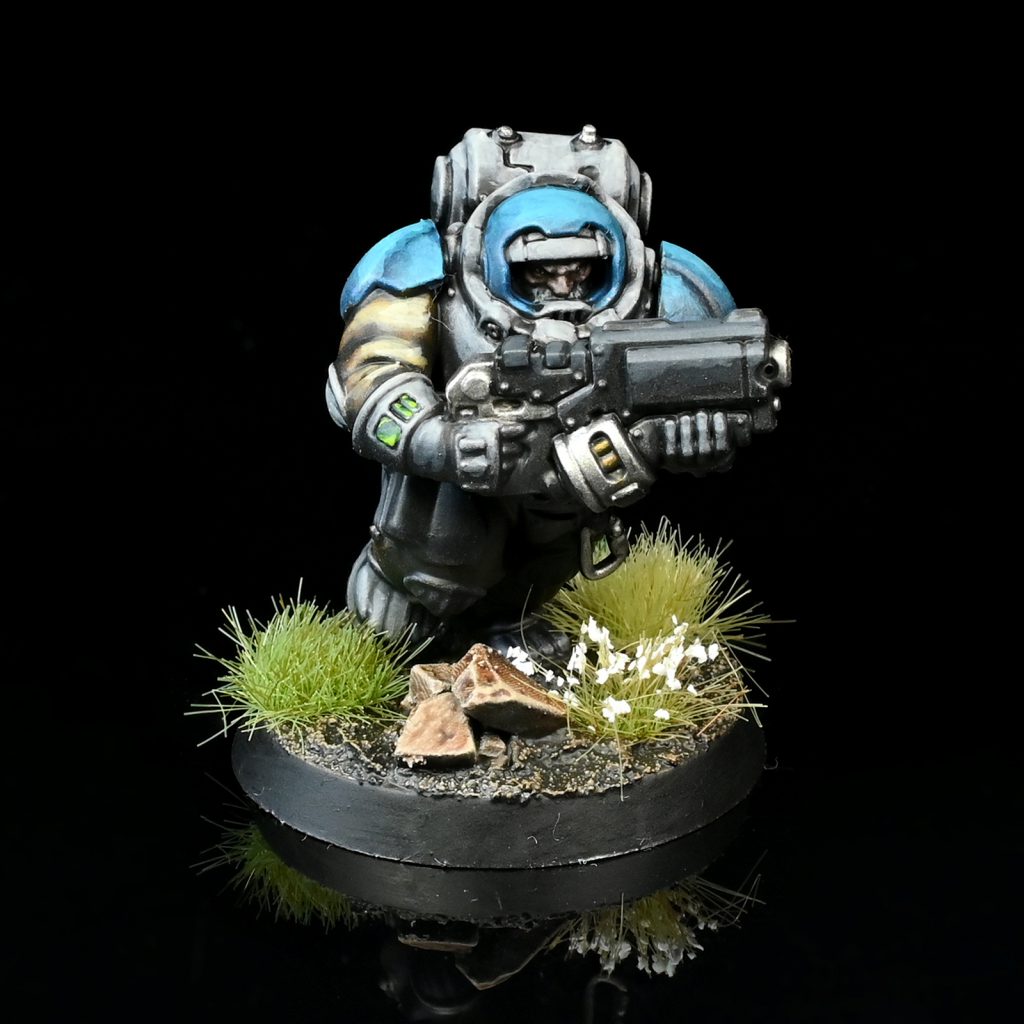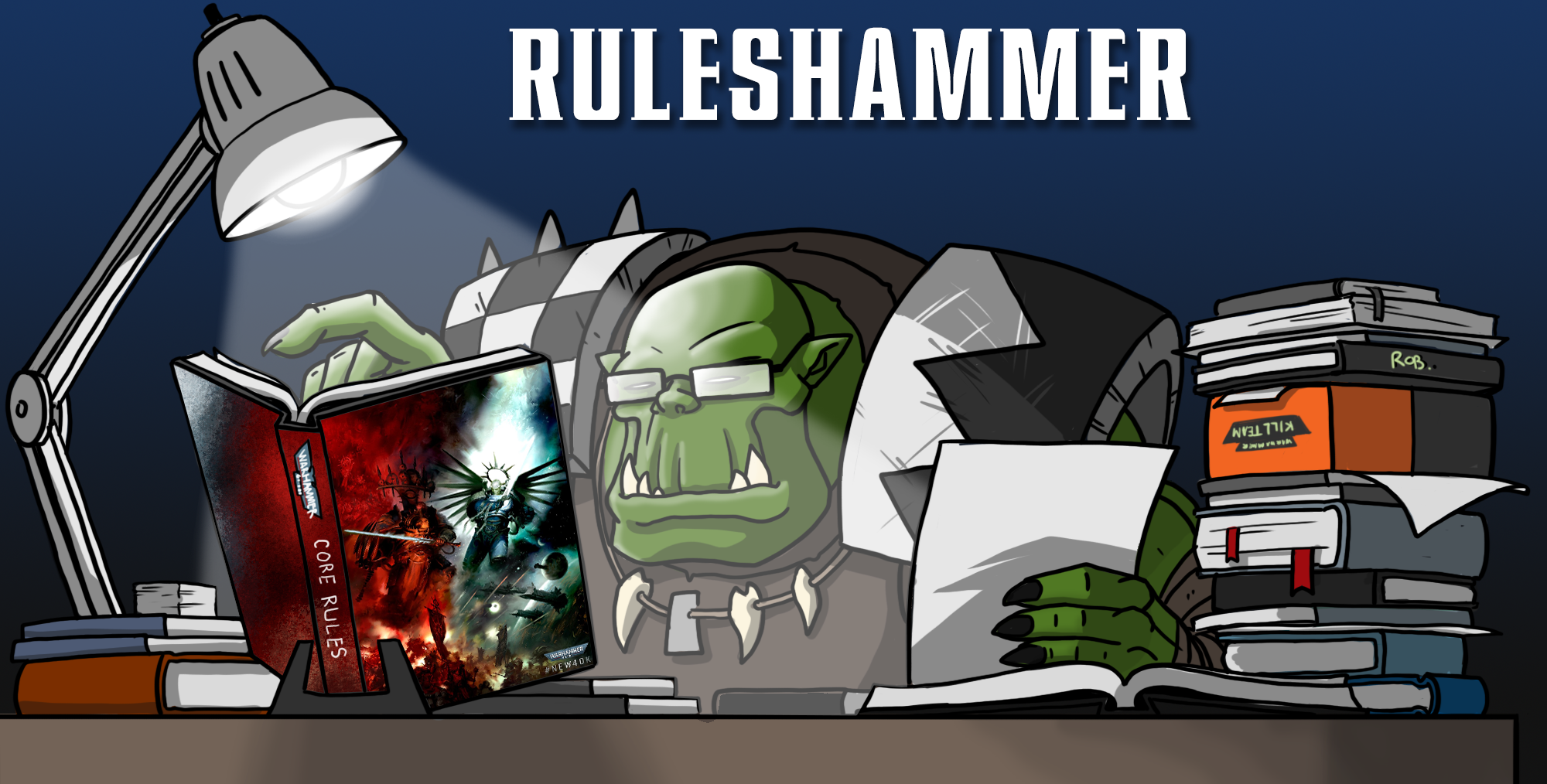Welcome to Ruleshammer! This time I’m covering more questions about Codex Leagues of Votann! You can find more Ruleshammer Q&A by clicking the banner below!
Table of Contents
FAQed by GW
All About Beams
They can hit friendlies?
Yes. Out of the gate the very first question is at very the very least direct and to the point: Beams which intersect or pass over friendly units do “affect” them.
Q: Do weapons with the Beam ability affect friendly units along the line between the firing model and the target unit?
A: Yes. A wound roll should be made against those friendly units in the same manner as attacks against enemy units.
So why did I say that friendly units would not be affected by them in the original article? It’s all because of this part of the Beam rule:
Make one wound roll against the target unit, and each other unit this line passes over (excluding units that were not eligible to be targeted by this weapon when targets were selected).
Friendly units are not “eligible” targets for shooting, so while a bit odd that these beams could apparently pass harmlessly through friends it wasn’t really ambiguous. The rule only said to make wound rolls against units there were eligible targets for the weapon along that line, and that hasn’t changed – the rule still says this, and now the FAQ answer contradicts it. This leads to a series of follow up questions and issues.
Post-FAQ Suggestion: Do what it says; a friendly unit can be hit by beams, however keep on reading for some of the edge cases this FAQ causes!
Previous Pre FAQ Answer Nope. Make one wound roll against the target unit, and each other unit this line passes over (excluding units that were not eligible to be targeted by this weapon when targets were selected). Units that aren’t eligible targets are ignored by Beams, this includes friendly units but also enemy Characters that were non-targetable for reasons such as Look Out Sir.
Beams can hit their own unit?
Unfortunately it was also this section of the rule that previously prevented Votann beam weapons from needing to resolve a wound roll against their own unit.
Each time an attack is made with such a weapon, if a hit is scored, draw a line between the closest point of this model’s base (or hull) and that of the closest model in the target unit. Make one wound roll against the target unit, and each other unit this line passes over (excluding units that were not eligible to be targeted by this weapon when targets were selected).
They are an “other unit” in an “other than the target” read of the rule. There’s still perhaps some room for them to be excluded via the other but it’s not as clear as ignoring units that were not eligible. I doubt many events will rule on Beams this way, and it’s pretty avoidable as an issue if you move your models with it in mind.
What about friendlies within engagement range of enemies?
Unclear. Previously because an enemy unit within Engagement range of a friendly unit is not an eligible target for ranged attacks (outside of big guns never tire which has an already built in resolution, and pistols) it was played that neither the enemy unit or friendly unit could be affected by Beams.
However we now have an FAQ answer that essentially gives cause to ignore that element of the rule, should it be ignored for both units, just the friendly one, or neither. There are, in my opinion (so don’t accuse me of having a RAW backing for this), two ways this “change” could be interpreted:
1) GW used eligibility when they actually meant more specifically that Beams should not be resolved against units out of sight or character units that could not originally be targeted by that beam weapon. This is the version I consider the most likely as Votann have A LOT of beams, and whist this type of rule was not introduced by Votann they are certainly the most prolific user of it. Earlier examples did not have this restriction, such as this Tau Prototype.
ALTERNATING FUSION BLASTER
Abilities: Each time an attack is made with this weapon, if a hit is scored, draw a straight line between the closest point of this model’s base (or hull) and that of the closest model in the target unit. Make one wound roll against the target unit, and each other unit this line passes over.
So while this weapon could beam through to hit out of sight things or intervening characters that weren’t targetable it was ONE weapon in an army and only has 12″ of range. So actually getting into a position to do those things had several layers of difficulty to it. Where as Votann could do it far more easily and more often, hence the restriction. Using this interpretation, both the friend and enemy units locked in combat would have beam wounds resolved against them if visible and not character units.
2) GW didn’t intend for Votann Beams to work differently to earlier examples of the mechanic hence this FAQ answer which would line up with how other weapons, such as that Tau Fusion Prototype would work. I seriously doubt this was intended because of the aforementioned quantity of Beams Votann can bring to the table and the diagrams in the codex making it very clear that Characters and units out of sight are not affected, the codex actually doesn’t include a combat/engagement range-based example. Further supporting the notion that they forgot about that form of ineligibility.

If the intervening units don’t count as “hit”, do any rules still trigger?
First of all this answer confirms that Conversion Beamers do resolve two wound rolls against intervening targets but not for the reason I thought they would:
Q: If an attack with a beam weapon scores one or more additional hits on the target, do those additional hits also trigger wound rolls against any intervening units?
A: Yes. Each time an additional hit is scored against the target, that hit counts as its own attack, and so will cause a wound roll to be made against any intervening units.
This confirms that the extra hit from something like an SP COnversion beamer is considered a separate attack and therefore triggers more wound rolls on intervening units. One big difference this interpretation causes from my original suggestion is that the intervening unit does not need to be 15″ away to take the two wound rolls, just the original target.
Second, this FAQ is probably going to cause a bunch of confusion but is actually far more specific that it appears on first read:
Q: When a beam weapon causes a wound roll to be made againstcan intervening unit, does that unit count as having been hit by an cattack for any other rules purposes?
A: No.
I’ve already seen a few interpretations of this FAQ suggest that this means the wound rolls made against intervening units do not count as attacks. This is really not what is says, it says they do not “count as having been hit”. That doesn’t mean the wound rolls being made do not represent attacks – attacks are absolutely happening. Otherwise the “allocate attack” step is going to get very confusing and difficult to resolve. It just means any rules that trigger from the unit being hit specifically don’t happen, one key example being this Stratagem:
CORE-BUSTER FIRE PATTERN
Use this Stratagem in your Shooting phase after an enemy unit is hit by an attack made by a beam weapon fired by a VOTANN model from your army. Until the end of the phase, each time that enemy unit is hit by another attack made by a beam weapon fired by a VOTANN model from your army, roll one D6: on 4+, that enemy unit suffers 1 mortal wound in addition to the normal damage. A unit can only suffer a maximum of 6 mortal wounds per phase due to this Stratagem.
Intervening units would not count as hit and not suffer mortals from this stratagem. Only units directly targeted and hit be beam attacks are affected. Rules like this one:
Duty Eternal: Each time an attack is allocated to this model, subtract 1 from the Damage characteristic of that attack (to a minimum of 1).
Would still work for intervening units because if that wound roll is successful, then an attack is allocated. It doesn’t care if the unit was “hit” or not. This answer doesn’t disable every defensive ability in the game for intervening units, or cause the abilities of targets to apply to intervening units via some sort of inheritance system based on a “there’s only one attack” interpretation. There are multiple attacks, and each time you go through the attack sequence is an attack. Some of them in this case just happen to skip the hit roll.
[Expand title=”Previous Pre FAQ Answer”
Beam weapons have a special rule allowing models along the path of the beam to be “wounded” by it. It’s however vague on if this counts as hitting the unit or not.
BEAM
Some Votann weapons have the Beam ability. Each time an attack is made with such a weapon, if a hit scored, draw a line between the closest point of this model’s base (or hull) and that of the closest mode in the target unit. Make one wound roll against the target unit, and each other unit this line passes over (excluding units that were not eligible to be targeted by this weapon when targets were selected). When a VEHICLE model makes an attack with beam weapons that targets an enemy unit in Engagement Range of it, that attack is only resolved against that target unit and it cannot HIT any other unit.
Honestly, for almost the entire rule up to those last five words I would say that the intervening units are “just wounded” and not “hit.” However that last line throws this line of reasoning into doubt as it specifically disables Beam weapons’ ability to “hit” other units. Why does this matter though? Well, it matters because there are abilities in the codex – some for Beam weapons – themselves that trigger on being hit. For instance, the Hekaton’s beam weapon:
SP CONVERSION BEAMER
Beam. Each time an attack made with this weapon hits a unit, if the unit that was hit is wholly more than 15″ from the firing model, one additional hit is scored against that unit.
If the intervening unit counts as being hit, and it’s more than 15″ away, then it arguably is also hit twice as the main target would be. If it didn’t count as hit then it would not be. Whilst I personally lean towards the intention being that these units don’t count as being hit I don’t have a strong basis to defend that position, so my suggestion for this is:
Pre-FAQ Suggestion: Beam weapons count as having hit any intervening units and trigger any rules that would be triggered by successful hits on said units. Range requirements for such effects are to that intervening unit, not to the original target.
Also before moving on I have to mention Forge Masters Eye, an Ancestral Judgement for Brokhyr forces, specifically this part.
…If a Brokhyr Forge Master model makes an attack with a beam weapon, this ability also applies to any intervening units that are ‘hit’ by that beam that have 1 or more judgement tokens.
GW pretty much literally wrote hit in “air quotes”. What does that even mean?
Wings: This one has also been a subject of lively debate in the Goonhammer offices, as there are quite a lot of things hanging off the answer. I 100% agree with the suggested ruling above, but also think this probably is the intent – there are some abilities in the book (e.g. the Ymyr beam stratagem) that seem very limited in what they can do if they don’t affect intervening units, though to be fair with that one the scope of what you can do with it when it does work ends up looking a bit much. Ultimately, however, I think this is a case where the reason the rules don’t clarify this is that it seemed obvious during writing, and am laying a small bet in the only currency that matters (other Goonhammer writers getting to say “I told you so”) that that’s how it’ll come out in the FAQ.
[/expand]
Other Q&A
How does Magna Rail Damage allocation work?
Much has been said about Magna Rail’s ability to spill damage but there’s just as much about it that is leaning on concepts we haven’t seen before in 9th edition… some that arguably don’t exist.
MAGNA RAIL
…on an unmodified wound roll of 6, excess damage that weapon inflicts is not lost. Instead, keep allocating excess damage to another model in the target unit until either all the excess damage has been allocated or the target unit is destroyed.
The prevalent approach to resolving this rule is that once a save has been failed, and the model that the wound was initially allocated to has been destroyed, the remaining damage goes from model to model, killing them one after the other. However allocating damage isn’t something the rules actually cover. Wounds are allocated, not damage. Damage is suffered or inflicted and causes models to lose wounds. GW really loves the word wound.
What are the consequences of this? First of all it’s the reason that only one save is made against these weapons (assuming you have a good enough armour save to tank the AP), the attack is only allocated to one model and you save against attacks not damage. Secondly, and this is where the things get weird, “Rules As Written” there are no rules explaining what to do with “allocated damage,” so there’s an argument it does nothing. This is not a serious position to take but an amusing one. A more serious issue is that there’s no rules on how damage must be allocated; as previously stated allocating damage is not allocating attacks/wounds. So the rules that require allocation to already wounded models is entirely absent. There’s no rule requiring the spilled damage to be allocated to a single model in the unit; it is heavily implied though.
Pre-FAQ Suggestion: Inflict remaining damage on one model at a time until that model is destroyed before moving on to another model. Inflicting damage to a model does not count as allocating a wound to said model.
Why that last part? This is why:
How does damage spillover interact with -1 to Damage weapons?
DISGUSTINGLY RESILIENT
Each time an attack is allocated to a model in this unit, subtract 1 from the Damage characteristic of that attack (to a minimum of 1).
I think damage reduction abilities will only trigger once vs the current wording of Magna Rail, as the attack is only allocated to a single model.
Rob: This is a rule Death Guard also have on the Haze of Corruption Stratagem; there the rules text says that excess damage is “suffered” by another model in the unit, not allocated. Worth noting that this might have been a better way to go, and gives us a paradigm for how to do this – you pick another model to suffer the excess damage, if it dies, you repeat the process. This looks just like allocation without using broken terminology.

How does Ancestral Fortune work with weapons that do 2D3 or D3 damage?
Hammer of Math covered what this ability can do and used one of a few different interpretations we “debated” here at Goonhammer HQ.
Ancestral Fortune: Once per battle round, when you make a hit roll, wound roll, damage roll, or saving throw for this model, or a friendly GREATER THURIAN LEAGUE unit within 6″ of them, you can change the result of that roll to a 6. For any rules purpose this counts as an unmodified 6.
For Hammer of Math the rule is interpreted using the Roll Result definition from the glossary.
ROLL RESULT
A roll result is the final result of a roll, after any dice that make it up have been added together, before any modifiers are applied.
The roll result is the total, so changing it to the total of 2D3 to a 6 seems completely fine. The weirdness arises from weapons where 6 is greater than the Roll Result could usually be, for instance on a D3 weapon, or a D3+3 weapon such as a Magna Rail Rifle. Does changing that damage roll result to a 6 result in 9 damage (6+3) or 6 damage (6/2)+3?
Further ambiguity is added by the last line of the rule:
For any rules purpose this counts as an unmodified 6.
A roll result doesn’t have “unmodified” as a characteristic, that’s a word used for Dice Results. I genuinely don’t know how this is meant to function. Should it be just one dice of the 2D3 and treat it as a 6 that becomes a 3? Should it be the whole result? Should the ability allow a weapon to exceed it’s normal damage cap? I doubt it’s intended to do that though.
Pre-FAQ Suggestion: The ability alters the roll result but cannot change a result to greater than would be possible from the dice being rolled.
I.E. 2D3 can have a roll result of 6 so the ability changes the result to a 6.
D3 can not result in above 3 so it is changed to it’s maximum of 3.
3D3/2D6 etc can result in more than 6 so this ability would change the result to 6. Obviously this could be less than what was rolled so you would not use the ability on those rolls in those instances.

Can the Ancestors are Watching secondary objective score above 15 VP before the reduction is applied at the end of the game?
Nope. No ambiguity on this one – Nephilim has a specific rule for handling Secondary Objectives that include VP subtraction:
Some secondary objectives include conditions that can reduce your victory points at the end of the battle. If such conditions apply, first add up all the victory points you scored from that secondary objective (to a maximum of 15), then reduce the total as instructed by that secondary objective (to a minimum of 0).
This prevents Ancestors are Watching from ever exceeding 15VP, meaning the subtraction for remaining Judgement token having units will always take it below 15VP unless there are no such units. This means you can’t buffer against it with excess VP.

What does HunTR do?
Nothing. It’s type Gun.
- It doesn’t double its shots at half range like Rapid Fire.
- It can’t be shot after advancing like Assault.
- It doesn’t suffer the -1 to hit penalty when used by moved Infantry like Heavy.
- It can’t be used within Engagement Range like Pistols.
It just does the number of shot it says and doesn’t have any fancy exclusions or penalties.
Have any questions or feedback? Got a rules question you want answered? Drop us a note in the comments below, ask a question in our Ruleshammer form, or head over to r/ruleshammer to discuss.



